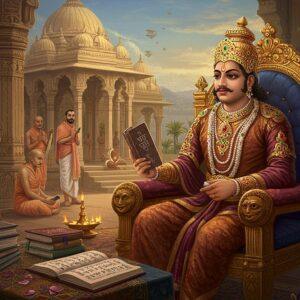
Nestled in the lush embrace of Kerala’s Western Ghats, Thamarassery is more than just a town; it’s a living storybook. Its hills and valleys echo with tales of ancient kingdoms, bustling trade routes, and unwavering spirit. Once known as Thazhmalachery, this land has witnessed history unfold, from the valor of Kottayam kings to the strategic march of Tipu Sultan. Join us as we journey through the timeline of Thamarassery, a place where every corner holds a piece of our shared heritage.

The Whispers of the Past: Early Roots of Thamarassery
The story of Thamarassery begins with its very name. Some say it comes from “Thaamara” (lotus) and “Cheri” (village), painting a picture of a serene, lotus-filled settlement. Another legend speaks of a brave local chieftain named “Thamarassi,” whose courage became synonymous with the land itself. Long before India’s independence, this region was an integral part of the Kingdom of Kottayam. It was a land of warriors, where kings who fought valiantly against the British were given land as a mark of respect. The sacred ground of the Thamarassery Kotayil Sree Bhagavathi Temple holds the resting place of Payyampally Chandu, a celebrated warrior, reminding us of the region’s brave heart.
The Legendary Thamarassery Churam: A Lifeline Through the Ghats
You cannot speak of Thamarassery without mentioning its most iconic feature: the Thamarassery Churam. This breathtaking mountain pass, with its nine dramatic hairpin bends stretching over 14 kilometres, is the artery connecting Kozhikode with the misty hills of Wayanad. For centuries, even before the British arrived, this “Churam” (the Malayalam word for pass) was a bustling trade route. Imagine caravans carrying fragrant spices like pepper and cardamom, making their way from the Malabar Coast to the Deccan Plateau. It was the lifeline of the regional economy.
The modern ghat road we see today was constructed by the British East India Company, a project that transformed the region. The story goes that they couldn’t find the path through the dense forest until a local tribal leader, Karinthandan of the Paniya tribe, guided them. The Churam is not just an engineering marvel; it’s a testament to the deep connection between the people and the land.

A Tapestry of Faith and Community
Thamarassery’s soul is rich with spiritual harmony. The establishment of the Syro-Malabar Catholic Diocese on April 28, 1986, marked a significant milestone in its religious landscape. Temples, churches, and mosques stand side-by-side, reflecting a culture of mutual respect and coexistence that has been nurtured for generations. This spiritual fabric is what gives the town its unique warmth and resilience.
When we engage in our own rituals and traditions, we connect with this very same history. Keeping our heritage alive requires authentic items that carry the sanctity of our customs. For all your spiritual needs, from daily pujas to special ceremonies, we invite you to explore the extensive collection at poojn.in. We ensure that every product, be it pure camphor for your aarti or a traditional Kora Dhoti for sacred occasions, is sourced with care and respect for tradition.
Thamarassery Today: Rooted in Tradition, Growing Towards the Future
From its administrative beginnings with the formation of the panchayat in 1936, led by its first president Attakoya Thangal, Thamarassery has grown into a bustling modern town. It remains deeply connected to the earth, with agriculture as its backbone. Lush plantations of coconut and rubber thrive here, and it proudly hosts Kerala’s very first rubber estate. Located on National Highway 766, it serves as a vital hub, connecting major towns like Kozhikode, Kalpetta, and Koyilandy. Thamarassery today is a beautiful blend of its storied past and a dynamic present, a true gem of Kerala.
Understanding Thamarassery’s Rich Past
Many often ask what makes Thamarassery’s history so special. Its significance lies in its incredible journey from being a crucial trade link between the coast and the hinterlands to a place of immense cultural and spiritual confluence. The town’s evolution is a story of how different cultures, from local tribes to colonial powers, have left their mark, creating the diverse and vibrant community we see today. The festivals here are not just celebrations; they are colourful reflections of this blended history, showcasing traditions passed down through generations. To truly understand Kerala’s history, one must look at places like Thamarassery, which has always been at the crossroads of commerce and culture.
For any questions or to find the perfect items to honour your traditions, you can always reach out to us at 03369029784 or send a message on WhatsApp at 9476142738. At Poojn.in, we are here to help you stay connected to your roots.


